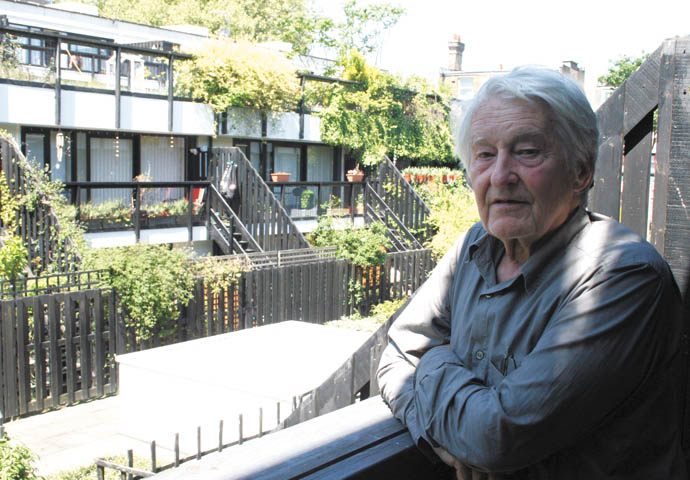Not cardboard housing, but homes that have been allowed to deteriorate
Thursday, 10th March 2022

Neave Brown: all his schemes built for Camden won awards
• I READ with disbelief, frustration, despair and anger the words attributed to Marcus Boyland, Camden Council’s current Labour chief whip, (‘Cardboard’ council estates only designed to last 15 years, claims Labour’s party whip, March 3).
Disbelief because it is simply not true. Council housing schemes built in the 1960s and 70s were financed through loans for a minimum of 40 years. To incur those loans, councils had to get permission, “loan sanction approval”.
No council would have been granted authorisation to borrow to build homes which would be gone in 15 years, leaving them paying ratepayers’ money for 25 years on housing that no longer existed.
Council minutes for February 8, June 28 and November 15 1961 show that the government approved loans for building housing on West Kentish Town estate and West Kentish Town estate extension specifying an even longer repayment period of 60 years.
If Councillor Boyland’s statement were true, that would have left Camden Council paying 45 years’ further finance for nothing.
Frustration because the portrayal of “flat roofs and water pouring down the edge, down the walls so they had to be brought down” describes not how they were designed or built but how they have been allowed to deteriorate.
Three years ago, I wrote here about Neave Brown, the Camden Council architect, every one of whose housing schemes won awards.
Weeks before his death in January 2018 he appealed for Britain to adopt a mandatory scheme similar to that in multiple European countries in which a fixed amount, often around 18 per cent, of rental income goes into a protected account usable only for compulsory maintenance and upgrading on legally binding schedules. The terms are standard and written into contracts covering all rental housing, private and public.
Neave described how, around the world, housing often of lower initial quality than the West Kentish Town estate, has been kept attractive, comfortable and sound for decades. He contrasted that with Britain where no such funding requirement exists and deterioration and housing squalor abound.
Despair because any council housing built now faces the same problems, lacking not only guaranteed maintenance but resident caretakers and a council department responsible for full ongoing repairs, and risks deterioration, not the case before the 1980s.
Even though Camden Council has tried to shift, it still relies heavily on private, profit-making companies to carry out repairs and we have seen the consequences of that particularly in the wake of the Grenfell catastrophe.
Much blame lies with the disastrous policy changes introduced under Margaret Thatcher. There is currently no sign of improvement on the horizon and Cllr Boyland’s words hold out little hope for the future.
To address Camden’s housing crisis requires openness and honesty, not untruths jeopardising Labour’s credibility.
BERNARD MILLER, NW5